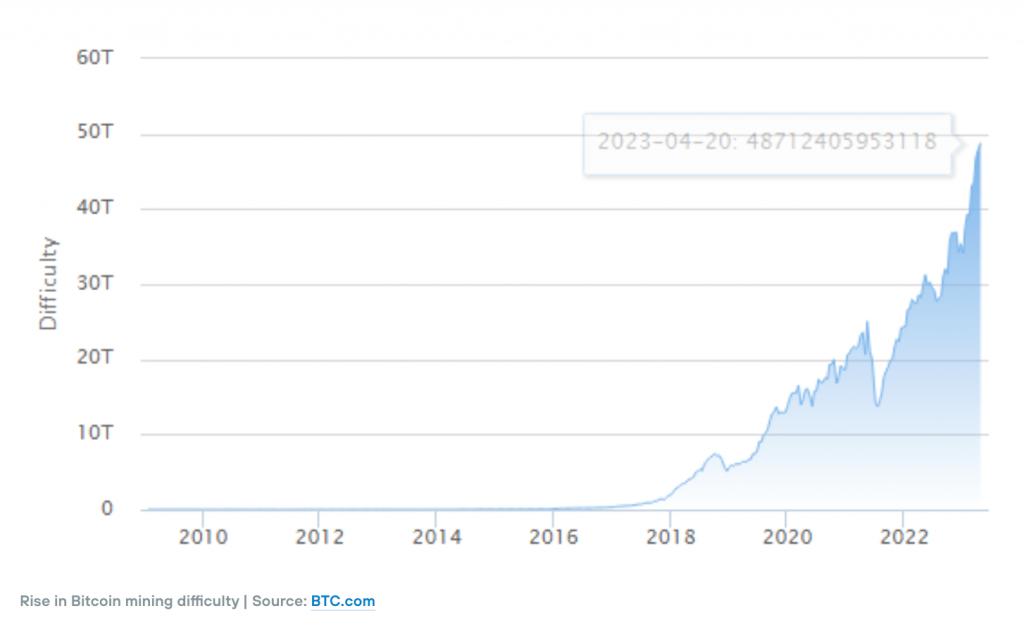Bitcoin Mining Difficulty Peaks, Demonstrating Network Resiliency.
Despite recent market instability, the network’s hashrate reached an all-time high of 348.6 EH/s. It means more miners are entering the network, which is good for Bitcoin’s long-term stability and health.

Bitcoin mining is the process of solving complex math equations to mine new blocks and verify transactions on the blockchain network. The difficulty of solving these equations is determined by the overall network hash rate, which is adjusted every two weeks or every 2016 block to maintain a 10-minute block time.
Initially, mining difficulty was quite low, and individuals could utilize home PCs or simple mining rigs to mine Bitcoin. However, as the network grew and more people began to mine, mining became more challenging and expensive. Today, mining requires a sophisticated setup to be successful.
The latest record mining difficulty of the BTC network illustrates its resilience and longevity. Despite the slump, the network attracts various miners and investors, which bodes well for its long-term prospects.
Furthermore, as more miners join the network, bad actors find it more difficult to achieve their goals, making the Bitcoin market safer overall.
The cryptocurrency market has been extremely volatile and unpredictable. Nonetheless, the rise in the crypto network’s average hash rate and Bitcoin mining difficulty demonstrates that the web is fortifying and getting safer. According to BTC.com, BTC’s mining difficulty has reached a new all-time high of 48.7T after a 1.72% increase, demonstrating the resilience and persistence of the cryptocurrency network.
Many experts feel the mining difficulty should be relatively high to safeguard the network. Crypto blockchains with great mining difficulty, such as BTC, are incredibly secure. Bitcoin mining difficulty changes constantly but has increased by 64% in the last year. As successful assaults need more computing power, the network is getting more secure.



